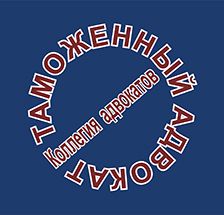Problems of classification of goods for customs purposes in the EAEU Member States
The topic of classification of goods in accordance with the commodity nomenclature of foreign economic activity (HS) is, in our opinion, one of the most relevant for participants in foreign economic activity (FEA). Firstly, the assignment of goods to a certain HS classification code often requires special technical knowledge and additional expert knowledge related to the definition of technical characteristics of goods, methods of production, etc. Secondly, the rate of duty and VAT and, accordingly, the amount of customs duties paid depends on which HS classification code the goods will be assigned to. Naturally, most disputes with customs authorities arise precisely at the stage of confirming the classification code of the goods declared by the declarant.
In most countries, there is a unified approach to the classification of goods, since the classification of goods for customs purposes is carried out on the basis of a harmonized system in accordance with the International Convention on the Harmonized Commodity Description and Coding System, concluded in Brussels on 06/14/1983 (hereinafter referred to as the Convention). More than 100 States, including Russia, are parties to the Convention.
Paragraph "a" of article 1 of the Convention states that the harmonized commodity description and coding system means a nomenclature including commodity items, subheadings and related numeric codes, notes to sections, groups and subheadings, as well as the basic rules of interpretation of the Harmonized System.
In accordance with paragraph 1 of Article 3 of the Convention, each Contracting Party undertakes that its customs tariff and statistical nomenclature will comply with the Harmonized System from the moment the Convention enters into force in respect of that Contracting Party. Thus, the Contracting Parties undertake to:
- use all commodity items and subheadings of the Harmonized System, as well as the associated digital codes, without any additions or changes;
- apply the basic rules of interpretation of the Harmonized System, as well as all notes to sections, groups, headings and subheadings and do not change the content of sections, groups, headings or subheadings of the Harmonized System;
-follow the coding procedure adopted in the Harmonized System.
The harmonized system provides for the coding of goods with six-digit numeric codes. At the same time, in accordance with paragraph 3 of Article 3 of the Convention, each Contracting Party may create subsections in its customs tariff or statistical nomenclatures for a deeper classification of goods than in the Harmonized System, provided that any such subsections are supplemented and encoded beyond the six-digit numeric code.
The EAEU Customs Code is based on the Harmonized Commodity Description and Coding System of the World Customs Organization and the Unified Commodity Nomenclature of Foreign Economic Activity of the Commonwealth of Independent States.
Meanwhile, the authorized customs authorities of the EAEU, which have different approaches to the classification of goods in accordance with the Customs Code of the EAEU and in case of failure to reach agreement on the classification of a particular type of product, apply to the EEC with a proposal to consider the classification of goods in accordance with the Customs Code of the EAEU.
At the same time, disagreements between the customs authorities of the EAEU member states on the classification of certain types of goods in accordance with the HS may arise on the basis of:
identification of incorrect classification;
a preliminary decision on the classification of goods,
decisions and clarifications on the classification of certain types of goods.
However, the reasons for such disagreements are not entirely clear, since preliminary classification decisions are mandatory only when declaring goods on the territory of the EAEU state, whose customs authority has made a preliminary decision.
Decisions and clarifications on classification are also mandatory only when declaring goods on the territory of the EAEU, the customs authority of which they were adopted.
In other words, the preliminary classification decisions adopted in the Russian Federation will not be applied, for example, in Kazakhstan or Belarus. Accordingly, neither party is interested in a single approach to classifying the same product.
Thus, in practice, it is quite acceptable for the same product to be classified by different customs authorities of the EAEU according to different classification codes. And if at the same time there is a difference in the rates of customs duties applied to these codes, then there may be a significant redistribution of commodity flows for certain categories of goods.
At the same time, only the customs authority can initiate an appeal to the EEC with a request to make a decision or clarification on the classification of goods, a participant in foreign economic activity is deprived of such an opportunity.
As a result, as before, the only possible way for a foreign trade participant to prove the validity of the classification code declared by him and protect his interests is to appeal to the arbitration court. Decisions of the customs authority on classification may be appealed in accordance with the procedure and time limits established by the legislation of the member State of the Customs Union, whose decision is being appealed. At the same time, for example, in Russia, when making decisions on HS codes, arbitration courts take into account the conclusions, acts of expertise issued by expert institutions, and are guided by the provisions of the International Convention on the Harmonized Commodity Description and Coding System.
Our specialists have extensive successful experience in solving such cases both in pre-trial and in court. Therefore, we are ready to help you in solving issues related to the classification of goods for customs purposes in the EAEU member states.
10.01.2024, Press Service of Customs and Corporate Lawyers
